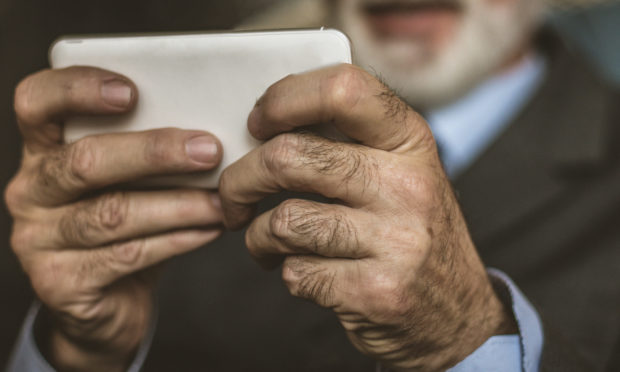I’d quite like to wake up now and discover this is all just a bad dream.
There is no panic buying. There is no self-isolation. There is no closure of schools and vulnerable individuals being asked to stay at home. There is no virulent, aggressive and dangerous virus.
But it’s not a dream.
I know, because yesterday, for the first time ever, I went to church and no one else was there. And the lack of people was, for once, nothing to do with my preaching.
There were no Church of Scotland services anywhere. That’s serious stuff. Not even during the two wars did the churches close.
For centuries, people in Scotland have had the opportunity to worship together in their parish church every single Sunday. Not so yesterday.
A sign of the nightmare that this pandemic, which is still weeks away from its peak, has induced.
No church services is, however, just a tiny drop in the ocean of impact that is being felt. There are the physical restrictions on movement and travel. There’s the closure of schools and offices.
But perhaps the most serious consequences of what is happening are those that are not nearly so visible.
People confined to their homes with no one to fetch what they need or to talk to. And how do you add to your electricity key if you can’t get out?
Schoolchildren reliant on free school meals, who no longer have that one meal to look forward to.
Parents who have to take time off now to look after their children and who are losing their income as a result.
Foodbanks that can no longer get the pasta and tins and such they so desperately need for families and individuals who simply cannot afford to stockpile and who have no reserves.
Local businesses such as cafes and pubs and restaurants having to pay people off and the worry of how those staff members are then going to pay rent, bills, food.
Then there is the anxiety people are feeling – the loneliness, and the stir-craziness that can go along with being stuck within the same four walls for weeks on end. It’s all pretty tough on people’s mental health.
On the upside (and yes, there is an upside) there is lots of very real evidence of communities pulling together to look out for each other.
There are volunteers collecting shopping and papers and prescriptions. There are people making and taking the time to phone each other just to talk.
And social media has come into its own – offering opportunities for people to talk to each other and to see others’ faces.
While there were no physical services taking place yesterday, there were still lots of acts of worship which people were able to join together in. Creative uses of live streaming or pre-recorded messages brought people together.
Video chat using the likes of Zoom or Teams (other platforms are available) gave people the chance to talk and reflect together.
It may not be the same as being able to burst into song with others, it may not be as good as having someone to rub shoulders with, but it is a way of maintaining contact during these difficult and trying times. I’ve heard of book groups meeting that way and Boys’ Brigade groups and knitting groups. Brilliant.
The only trouble is, if people are not digitally adept, hearing about these things of which you cannot be a part can end up making you feel even more isolated than you already are.
So a plea. A plea for all who read this to use their telephone once every day to call just one other person they know who is not online.
I suspect nothing is ever going to be quite the same again after this episode in history.
I think it will take a very long time before our society recovers from all the ramifications.
In fact, individuals, businesses, charities and churches, are probably facing times so challenging, that some may never fully recover.
So… where do I think God is in all of this? There will be those who say that Covid-19 is proof that God does not exist – otherwise why would God allow it? Others will say it is a judgment from God. Neither of these arguments hold water for me.
As thinking beings, we live making choices. I believe we find God in those choices. Both the good and the bad, sharing our joy when things go well and our tears when they go pear-shaped.
My reason for saying that is when God was born among us in the shape of his own son, he didn’t avoid all the hurt and pain that life brought. Instead he faced it, showing us how to live less selfishly and more lovingly.
God’s son modelled a way of life that refused to let hardship and suffering turn him in on himself. His hands were open. His arms outstretched.
None of us would ever want this virus, but perhaps through it we too can choose to look beyond ourselves.
In love and compassion.
The Very Rev Susan Brown is minister of Dornoch Cathedral and the former moderator of the General Assembly of the Church of Scotland
